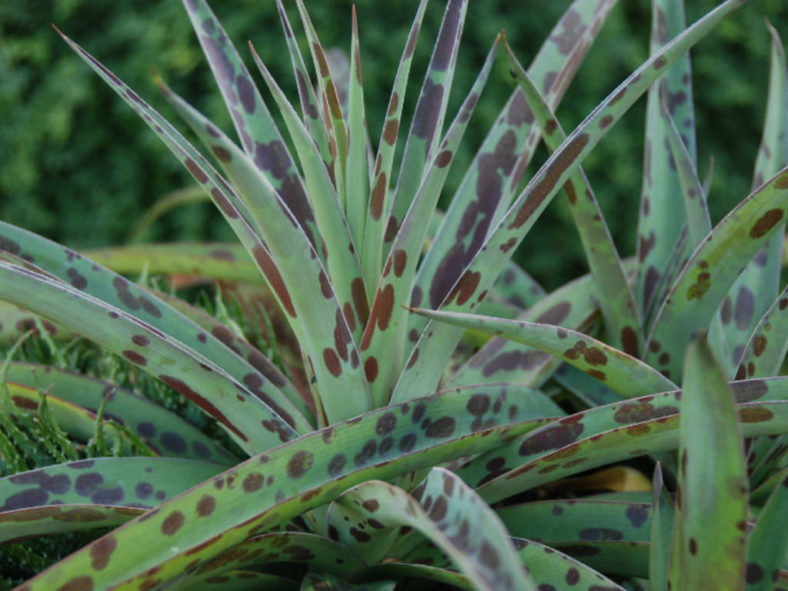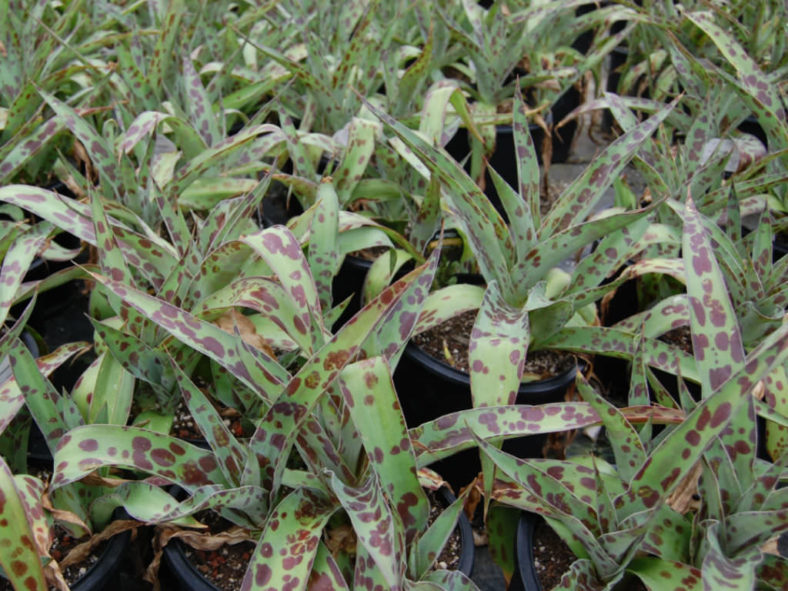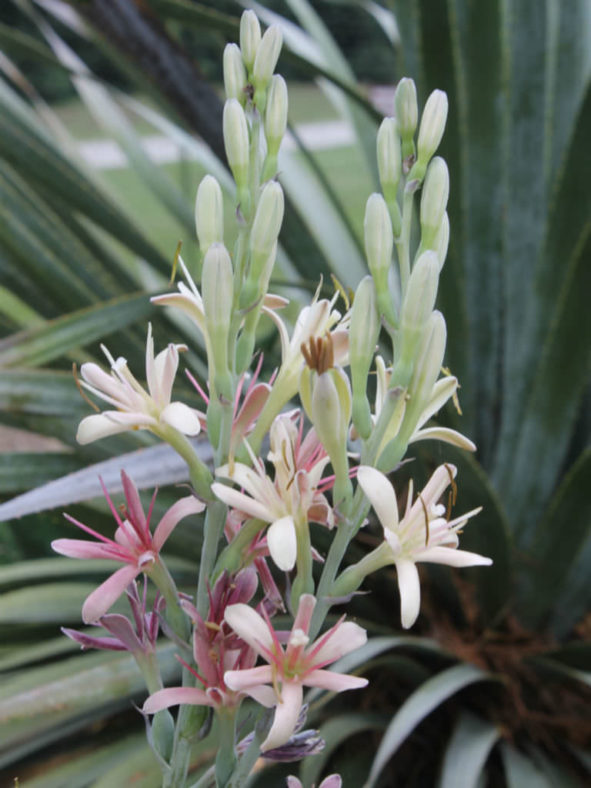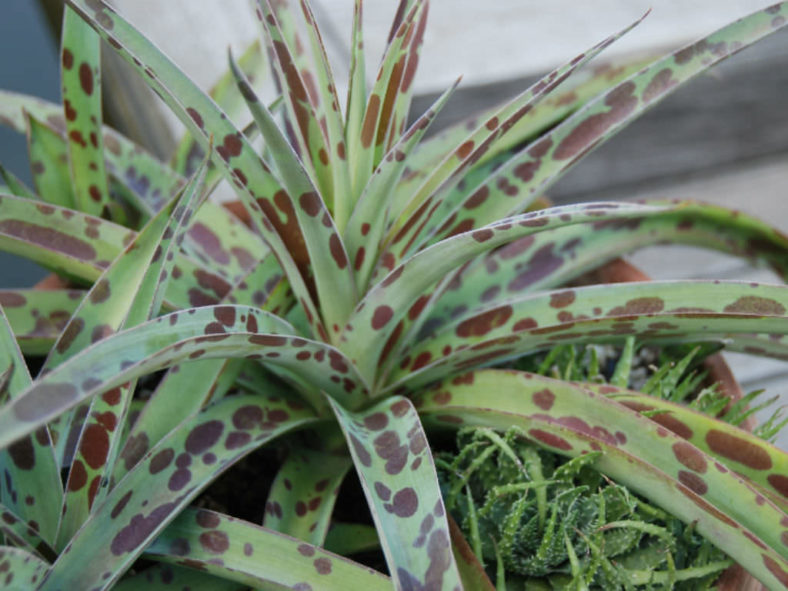Scientific Name
Manfreda maculosa (Hook.) Rose
Common Name(s)
Texas Tuberose, Spice Lily, Manfreda Agave, Rattlesnake Agave
Synonym(s)
Agave maculata, Polianthes maculosa
Scientific Classification
Family: Asparagaceae
Subfamily: Agavoideae
Genus: Manfreda
Origin
Manfreda maculosa is endemic to southern Texas and northeastern Mexico.
Description
Manfreda maculosa, also known as Agave maculata, is an attractive succulent that forms a stemless rosette of dull-green leaves marked with round, reddish-purple to dark brown spots. It spreads slowly by underground rhizomes, forming a dense clump. The leaves are thick, fleshy, and sword-shaped, measuring up to 14.4 inches (36 cm) long and 1 inch (2.5 cm) wide.
The mildly fragrant flowers are about 2 inches (5 cm) across, cream-colored to greenish-white, age to rose pink, and appear on spikes that can grow up to 6 feet (1.8 m) tall in spring. They open and change colors over 3 to 4 days of life.

Hardiness
USDA hardiness zones 7a to 9b: from 0 °F (−17.8 °C) to 30 °F (−1.1 °C).
How to Grow and Care
Manfreda is a tender perennial or "temperennial" succulent plant that grows best in full sun. Plant in well-drained, dry to average soil in containers just slightly wider than the width of the rosette or plant directly in the ground. Since the plant has a large root system, the container should be at least 12 inches (30 cm) deep. Manfreda is a slower grower, so it will not quickly overtake the space allotted in the landscape.
In summer, when the plants are actively growing, they appreciate a bit of supplemental watering and half-strength fertilizer. During the winter, the plants should be allowed to dry and stored in a cold room at 48 °F (9 °C). Plants are watered only enough to keep the foliage from shriveling.
Manfredas are usually propagated by the removal of offsets, but they can also be started from fresh seeds. The seeds germinate in 7 to 21 days at 68 to 72 °F (19 to 22 °C).
See more at How to Grow and Care for Manfreda.
Hybrids
Links
- Back to genus Manfreda
- Succupedia: Browse succulents by Scientific Name, Common Name, Genus, Family, USDA Hardiness Zone, Origin, or cacti by Genus
Photo Gallery
Click on a photo to see a larger version.


